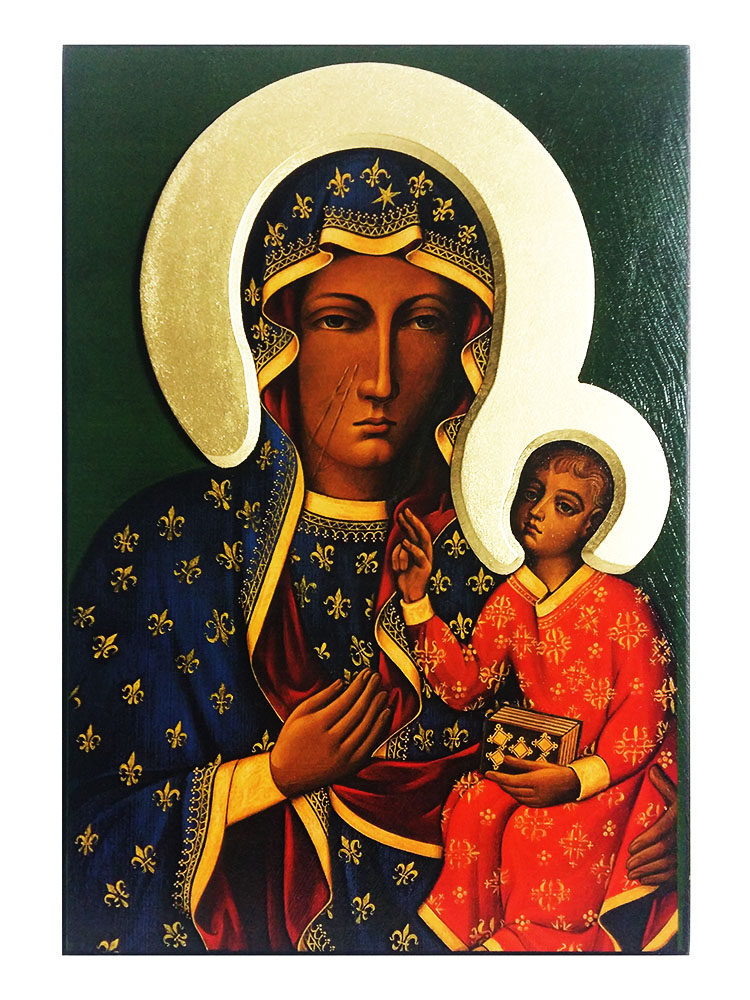According to archival documents, the author of the image of the Virgin Mary of Czestochowa is St. Luke the Evangelist, who, at the request of the believers, painted a portrait of Mary with the Child on the table top in the house of the Holy Family in Nazareth, where the Virgin Mary sat.
The painting was later transferred from Jerusalem to Constantinople and from there it was given as a gift, from the Byzantine emperor Constantine, to the Russian prince Leo. During the battles fought by Casimir the Great with the king Luis of Hungary in Russia, the painting was hidden in a castle near the town of Belz in Galicia.
In 1382, Prince Vladislav II. Opolsky found it there. Thanks to Maria’s intercession, the prince received many graces and therefore decided to bring this painting to Czestochowa in Poland.
The current painting of the Czestochowa Madonna is an exact copy of the original one, which was in 1430 destroyed by robbers, who then hit the Virgin Mary with several saber wounds.
After the destruction of the image in 1430, an exact copy was made. In order to preserve the original as exactly as possible, the painting was even painted on the original table top.
The picture was painted using the encaustic method used by the old Christian and Byzantine masters. Changes were made only to the ornaments of Mary’s dress – the new lilies on Mary’s cloak are too reminiscent of the coat of arms of the Old Hungarian king Luis of Anjou. In addition, the child Jesus probably got a book in his hands.
From the original icon, traces of violence after the robbery in 1430 were preserved – two parallel scars after slashing with a saber on Maria’s right face and several similar, but noticeably smaller, scars on her neck. The painting of the Czestochowa Madonna has been restored several times.
The image is famous for numerous miracles. The medallion of the Virgin Mary, resembling a shield, also served as protection for the soul and body of Polish knights. In Poland, there is a tradition among believers that people who wore this medallion were protected from persecution during the communist regime.

